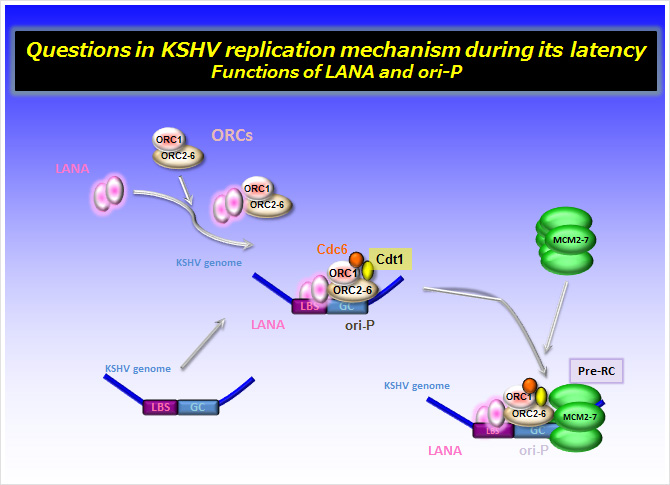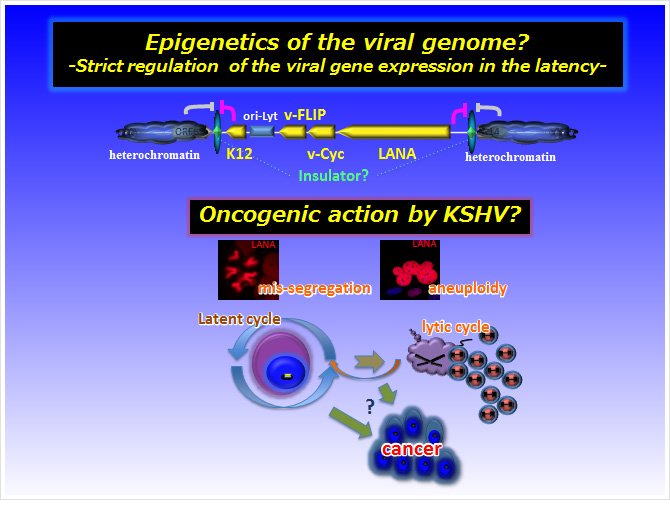

Elucidation of viral gene expression mechanism
Latent infection of herpeviruses limits their gene expression. Out of more than a hundred genes that KSHV encodes, only a few genes are expressed in the latency. This phenomenon must be exclusively tightly regulated since there are more than a hundred genes side by side in the 140kb DNA genome. We are trying to understand this tight/accurate/precise gene regulation, which will lead a new movement of life science.
To solve viral replication strategies
The KSHV genome replicates according to host cellular cell cycle, that is, KSHV ultimately utilizes the cellular replication machinery. We are trying to know LANA, which is a key viral factor involved in this process, totally, and how the viral latent replication origin (ori-P) is determined, where cellular replication factors assemble according to the cell cycle. Furthermore, we would like to understand how the latency was changed to lytic replication cycle and what happens at this dramatic phase shift. Using KSHV and Epstein-Barr virus (EBV), we are trying to identify cellular factors interacting various kinds of viral lytic gene products and elucidate how the viruses set up the environment appropriate for their lytic replication.





